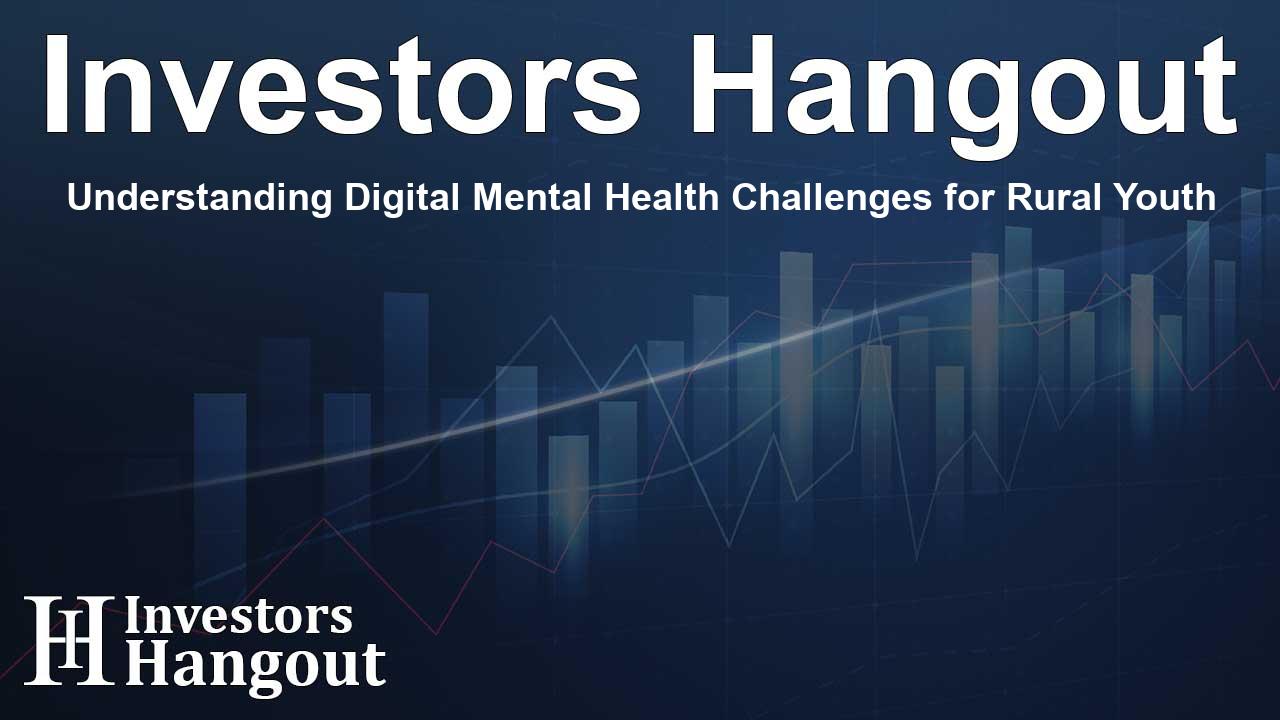Understanding Digital Mental Health Challenges for Rural Youth

Understanding Digital Mental Health Challenges for Rural Youth
A recent study highlights that young people living in rural areas often experience similar rates of depression and anxiety as their urban counterparts. However, they face significant barriers in accessing digital mental health resources, such as apps and online therapy. This issue is particularly pressing as traditional mental health services may not be readily available in more remote locations.
The Findings of the Study
The research, focusing on rural realities, found that while depression and anxiety are prevalent among rural youth, their engagement with available digital resources is notably low. Despite similar challenges, the lack of access to mental health technologies exacerbates their situation. Digital resources were expected to bridge the gap, yet they have not succeeded in their promise thus far.
Social Media Usage Among Rural Youth
Interestingly, the study found that rural young people utilize social media less than their urban peers, with 75% engaging daily compared to 85%. However, many prefer online communication methods, which they feel comfortable with, over face-to-face interactions.
Application of Mental Health Resources
When it comes to mental health apps, the disparity is stark. Only 13% of rural participants reported using apps for depression, versus 19% in urban settings. The trend continues across various applications, showcasing a gap in understanding and utilizing available resources.
Challenges and Barriers
Several key obstacles have been identified for rural youth in accessing digital mental health services. These include poor internet connectivity, stigma surrounding mental health, and a lack of parental support that fosters open discussions about mental health topics.
Experiences with Online Platforms
In interviews, one young person highlighted a familial belief trend against seeking mental health. They expressed a need for understanding and recognizing the importance of therapy and well-being, indicating that cultural beliefs often dictate personal attitudes towards mental health.
The Importance of Addressing the Digital Divide
Despite fewer positive affirmations found online, rural youth stressed the role of social media as a vital tool for creative expression and a means to find community support. Their experiences underline the digital divide’s significant impact on mental health accessibility.
Recommendations for Improvement
The results of the study showcase the urgency for bespoke strategies to enhance digital mental health resources. Communities need tailored solutions that resonate with their unique cultural and infrastructural realities, ensuring these digital tools are effective and accessible.
Research Insights Summary
This research represents insights from a broader national survey assessing various demographic factors. Interviews with rural young people were conducted to provide a nuanced understanding of the data, revealing the multilayered influences affecting their mental health.
About Hopelab
Hopelab aims to create equitable opportunities for young people to lead fulfilling lives. As a researcher and advocate, they focus on improving mental health and wellness for diverse youth, particularly those from marginalized backgrounds. Their mission is to close the mental health gap faced by underserved communities.
Frequently Asked Questions
What are the unique challenges facing rural youth in mental health?
Rural youth often experience similar rates of mental health issues but face barriers like lack of access to digital tools and stigma surrounding mental health discussions.
How does social media usage differ among rural and urban youth?
Rural youth use social media less frequently but often prefer it for communication over in-person interactions.
What percentage of rural youth utilize mental health apps?
Only 13% of rural youth use apps for depression, significantly lower than their urban peers.
Why are rural youth less likely to attend online therapy?
Barriers such as stigma, lack of parental support, and limited internet connectivity contribute to this lower attendance rate.
What role does Hopelab play in addressing these issues?
Hopelab conducts research and advocates for enhanced mental health resources tailored to meet the unique needs of rural and underserved youth.
About The Author
Contact Kelly Martin privately here. Or send an email with ATTN: Kelly Martin as the subject to contact@investorshangout.com.
About Investors Hangout
Investors Hangout is a leading online stock forum for financial discussion and learning, offering a wide range of free tools and resources. It draws in traders of all levels, who exchange market knowledge, investigate trading tactics, and keep an eye on industry developments in real time. Featuring financial articles, stock message boards, quotes, charts, company profiles, and live news updates. Through cooperative learning and a wealth of informational resources, it helps users from novices creating their first portfolios to experts honing their techniques. Join Investors Hangout today: https://investorshangout.com/
The content of this article is based on factual, publicly available information and does not represent legal, financial, or investment advice. Investors Hangout does not offer financial advice, and the author is not a licensed financial advisor. Consult a qualified advisor before making any financial or investment decisions based on this article. This article should not be considered advice to purchase, sell, or hold any securities or other investments. If any of the material provided here is inaccurate, please contact us for corrections.
